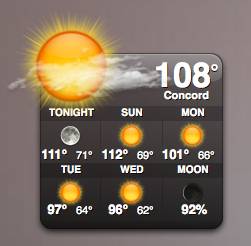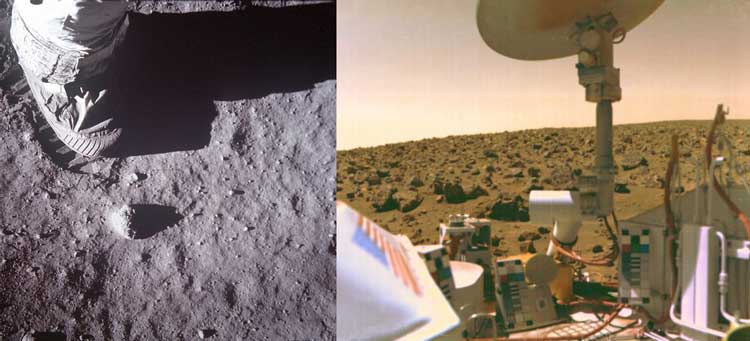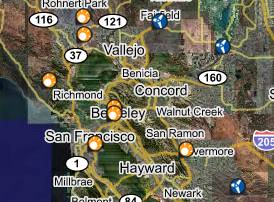Nature as an Information Economy
 A Friday afternoon thought experiment.
A Friday afternoon thought experiment.
The natural world was once thought of solely as a provider of resources for production. Wood, oil, water and other raw materials held value inasmuch as they were part of the industrial production cycle. This is a consumption perspective, one in which the natural world only has value if it contributes directly to the short-term economy. This is the industrial economy vision of nature.
A more nuanced perspective holds that the natural world is a provider of ecosystem services, ranging from clean air to soil formation to pollination. The ecosystem services concept doesn't deny that nature provides raw material for industry, but asserts that the sustained value of the services provided by nature can greatly exceed the short-term value of the raw materials. (A 2005 study from the Canadian Boreal Initiative demonstrated that Canada's forests are worth roughly C$37.8 billion in resource extraction, but C$93.2 billion in service provision; the study (PDF) is also an excellent primer on how ecosystem service value is calculated.) This is the service economy vision of nature.
But what happens when we think of nature as an information economy? By this, I mean thinking of nature not just in terms of the value of physical products or processes, but in terms of the value of the information about and derived from the natural world. We're not accustomed to thinking about nature in this way, but doing so has some interesting -- and, I think, useful -- implications.
Traditionally, we think of the value of a forest in terms of resources such as lumber or in terms of services such as oxygen creation through photosynthesis. We can also think of a forest in terms of information such as the plant DNA or the forest's role in various natural cycles such as storm mitigation, carbon sequestration, and habitat creation (in essence, how an ecosystem provides its services). Similarly, we can think of the value of water as deriving from its immediate use, from its sustained availability, and from the knowledge of characteristics such as location, volume, evaporation cycles, cleanliness, etc.. Arguably, ecosystem information has even greater potential value than immediate use or sustained services, in that the information can be used as the seed of new products, services and information, as well as to enhance the industrial and service economic value of the ecosystem and/or protect the ecosystem against industrial and service economic losses.
What makes the the information economy model different from industrial and service economies are two big factors: replicability and non-uniformity. Replicability means that information, especially digital information, can be copied without reducing its use value or its availability to the original possessor of the information. Biological aspects of an ecosystem clearly meet this condition, through the existence of DNA and built-in (if slow) copying mechanisms such as seeds. I can give you the "information" from my tree without losing value, even while you gain new value. Non-uniformity means that information has its greatest value in the context of other, different, kinds of information. Information can compete, leading to a "survival of the fittest" paradigm (a core concept of memetics), and can combine, leading to new kinds of information. In terms of ecosystems, diversity improves survivability, while uniformity increases vulnerability to threats (think here of monocultures).
The difference between industrial, service and information economies becomes important when we think about the implications each model has for how we work with the global ecosystem.
If we think about nature purely in terms of resources and consumption, the underlying model is competition over scarcity. Each participant in the economy has an incentive to over-consume in order to gain an advantage over competitors (or to avoid being penalized when others over-consume), and while cooperation is possible, it's not a given. The "Tragedy of the Commons" is the classic example of this paradigm.
If we think about nature purely in terms of services, the underlying model is sufficiency. Every participant in the economy gains a benefit from the maintenance of the system, but the cost of maintenance is borne by individual actors. "Free riders" gain the benefits of the system without paying the cost of maintenance. The result is that the system is typically in a state of bare sustenance, with participants acting to keep it going only when the alternative is system collapse. Ecosystem services are here considered a "public good."
If we think about nature in terms of information, however, the underlying model is abundance. Participants in the system create the most value for themselves not by hoarding or by passivity, but by adding more information into the system. The greater the amount and diversity of the ecosystem information, the more that can be done with the knowledge.
Sadly, the industrial economic concept of ecosystems still dominates; the ecosystem services concept is gaining ground among environmentalists, but has yet to take root (so to speak) in the popular mind. The ecosystem information model would need much more development before we could consider it an alternative approach, but it has a couple of things going for it: as the overall information economy continues to expand (especially as fabrication systems start to bring information economy patterns into the world of physical objects), we'll be more amenable to thinking about other aspects of the world in this way -- it may even prove to be a useful method of integrating ecological principles into the economy; and as we are forced more and more to bring climate disruption and environmental collapse to the forefront of our planning and politics, more of us will realize that we need more information about and from the ecosystem to be able to manage the situation successfully.
There are undoubtedly many holes in this idea, and I'd be more than happy to have them pointed out.
(Photo: Pajaro Sunset, Jamais Cascio © 2006)

 The temperature here hit
The temperature here hit 


 If scenario creation was the poster-boy for futurism in the mid-1990s, artifact creation looks to play that role for mid-2000s futurism. Combining strategic foresight with what amounts to
If scenario creation was the poster-boy for futurism in the mid-1990s, artifact creation looks to play that role for mid-2000s futurism. Combining strategic foresight with what amounts to  I had the somewhat surreal experience last night of participating in a focus group on the California energy industry. My experience was odd because, about a quarter of the way through, the moderator was called out by the faceless folks behind the mirror, and when he returned, he asked that I, in essence, keep my mouth shut. I literally knew too much about the world of energy production, distribution and efficiency to make a good focus group participant. I was told that they'd love to hear what I had to say at the end, if there was enough time. I did manage to sneak a couple of comments in here and there, but I ended up being more an observer than anything else.
I had the somewhat surreal experience last night of participating in a focus group on the California energy industry. My experience was odd because, about a quarter of the way through, the moderator was called out by the faceless folks behind the mirror, and when he returned, he asked that I, in essence, keep my mouth shut. I literally knew too much about the world of energy production, distribution and efficiency to make a good focus group participant. I was told that they'd love to hear what I had to say at the end, if there was enough time. I did manage to sneak a couple of comments in here and there, but I ended up being more an observer than anything else. Monday doesn't come until Thursday this week.
Monday doesn't come until Thursday this week.
